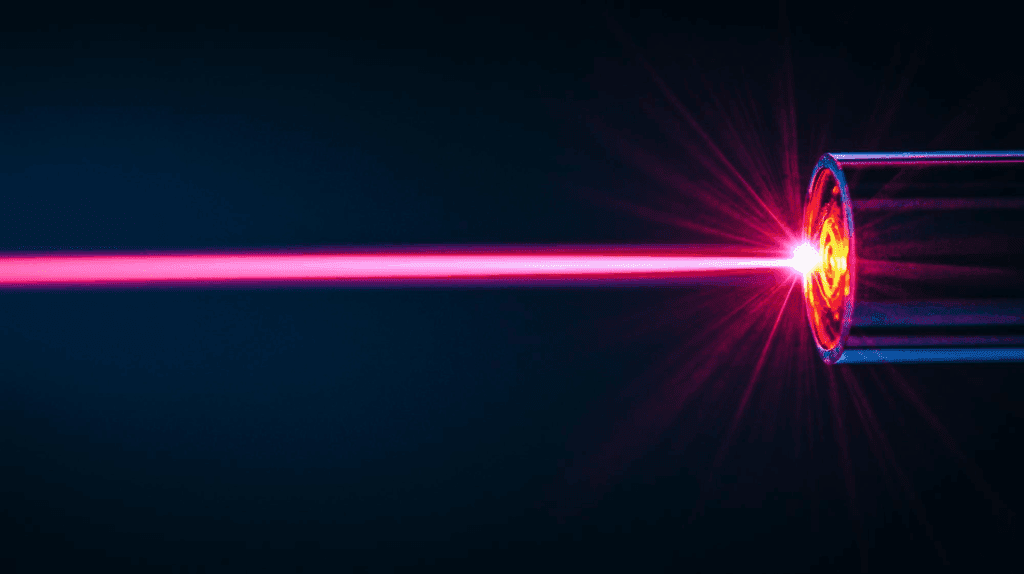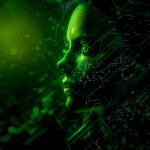A wave of concern is spreading through the tech and civil liberties communities. The cause is a new kind of surveillance device, a powerful long-distance laser that can read text etched or printed on tiny surfaces, even those smaller than a grain of rice. This laser system, developed in part with defense funding, has the extraordinary ability to detect, reconstruct, and read microscopic characters using only light. It operates from distances greater than a mile, without requiring physical contact or conventional lenses. The implications for privacy, security, and espionage are significant. This development stands as one of the most unsettling in the modern surveillance age because it redefines what it means to observe someone remotely.
How It Works: The Science Behind the Laser
At the heart of the system is a laser that emits highly coherent light. When aimed at a distant object, the beam reflects off the surface and returns to a receiver. Unlike normal reflections, the system gathers phase and vibration data, which are interpreted through synthetic aperture lidar, also known as SAL. By collecting data from multiple angles or positions and processing them using advanced algorithms, SAL builds a composite image of the object being scanned. This image is not merely visual. It includes surface texture, depth information, and sub-wavelength elevation changes. With enough data, SAL can reconstruct entire patterns of text or symbols, even if they are printed in faint ink or engraved into reflective surfaces.
To achieve its resolution, the laser must operate at very specific wavelengths. Shorter wavelengths, such as ultraviolet or blue light, offer greater resolution but require highly stable transmission to avoid distortion. The device also factors in the Doppler effect and ambient vibrations, which it can subtract from the final image using filtering algorithms. These advances mean that not only can the laser scan text from afar, but it can also do so through glass, across uneven surfaces, or in environments with minor movement.
What “Smaller Than a Grain of Rice” Really Means
Microscopic text used in high-security printing, such as banknotes or semiconductor components, is often just 100 microns or less in height. These dimensions are imperceptible without magnification. The spy laser system can read characters at this scale by analyzing how the beam scatters across minute ridges and valleys in the surface of the material. The system does not rely on color contrast, but rather on physical texture and surface topology.
Laboratory tests have shown that the laser can read serial numbers etched into circuit boards, hidden QR codes printed in special inks, and engraved security identifiers on mechanical parts. Some demonstrations even captured handwriting from a distance after scanning paper that had been indented but not marked with ink. The technology opens up possibilities for retrieving information that would otherwise appear invisible.
Developers and Funding Sources
This surveillance breakthrough is not the work of a single lab. It is the product of years of interdisciplinary collaboration between optics engineers, physicists, and artificial intelligence researchers. Leading contributions have come from defense-funded organizations, particularly DARPA, known for backing experimental military technologies. These agencies are interested in tools that can gather intelligence discreetly, without requiring operatives to physically approach the target.
Publicly available research papers, patents, and conference presentations have hinted at these capabilities for several years. Institutions such as MIT Lincoln Laboratory and Stanford’s Optical Imaging Group have explored high-resolution lidar and structured light systems for non-invasive inspection and scanning. The integration of military-grade precision optics with artificial intelligence now makes such tools field-ready, at least in prototype form.
Read More: Strange New Quantum ‘Species’ Discovered in Lab—And It’s Unlike Anything Seen Before
Implications for Privacy and Civil Liberties
The potential misuse of a spy laser is easy to imagine. Someone could scan a computer monitor through a window, read a handwritten note on a desk, or extract sensitive information from a document inside a vehicle. All of this could happen without the subject ever noticing. There is no visible beam, no lens glare, and no buzzing electronics. Surveillance becomes silent and invisible.
Civil liberties groups warn that this undermines the legal notion of privacy. Traditional laws rely on the assumption that privacy exists behind walls, curtains, and closed doors. But if data can be harvested through glass or from more than a mile away, the boundary between public and private is erased. This could affect journalism, political activism, and personal communications in profound ways. Without legal oversight, this technology could lead to abuse by authoritarian regimes, corporations, or even private investigators.

Military and Intelligence Uses
The military sees clear advantages in using long-range laser imaging systems. These devices can scan buildings for documents, read serial numbers on weapons or vehicles, and detect encoded patterns or markings used in covert operations. A drone carrying a spy laser could circle a location and record any printed material visible through a window, without ever alerting the target.
In intelligence work, the laser’s ability to read physical vibrations opens another door: audio surveillance. If aimed at a reflective object inside a room, such as a windowpane or a metal cabinet, the laser can pick up subtle oscillations caused by sound waves. These oscillations can be reconstructed into intelligible speech. This technique, known as laser vibrometry, has existed in theory for decades. But with the current level of precision and signal processing, it can now work from longer ranges and over noisier environments.
Commercial and Industrial Applications
In industry, laser imaging has practical uses beyond surveillance. Manufacturers are already using similar principles to inspect microtext on medical devices, microchips, and aerospace components. In these cases, reading extremely small text is crucial for confirming authenticity, batch tracking, or quality assurance.
Non-contact scanning also benefits industries like pharmaceutical packaging, where touching the surface could damage or contaminate the product. Lasers can scan through transparent seals or over curved surfaces without losing clarity. Even in agriculture, laser imaging is used to analyze plant textures and detect signs of disease or contamination.
Limitations and Challenges
Despite the potential, this technology is not perfect. Atmospheric interference remains a significant obstacle. Changes in temperature, air pressure, or wind can distort the laser beam. Long-range systems must also account for Earth’s curvature and vibration in the mounting platform.
Moreover, the system requires line-of-sight access. It cannot penetrate walls, dense curtains, or metals. It is also sensitive to beam dispersion. Any dust, moisture, or surface grime can blur the returning signal. These factors limit its use in uncontrolled or unpredictable environments. Large-scale deployment requires stable platforms, such as tripods or fixed installations, although military-grade stabilizers may overcome this limitation.
What Makes This Technology So Unique
What distinguishes the spy laser from other surveillance tools is its combination of precision and stealth. Telescopic lenses require visible light and clear conditions. Audio bugs need to be physically planted. But the spy laser reads physical text from afar without leaving a trace. It functions by reconstructing a complete map of the surface, down to microscopic irregularities, then using that map to form recognizable symbols.
Even partially obscured or damaged text can sometimes be recovered. Indented writing, faded printing, and engraved etchings all leave behind enough surface variation to be reconstructed. This has potential in criminal forensics, museum conservation, and artifact recovery, as well as intelligence work.
Future Surveillance Networks
Researchers envision a future where spy lasers are integrated into autonomous surveillance networks. Combined with drones, AI pattern recognition, and facial detection, these systems could map environments in detail while harvesting data invisibly. If deployed across cities, they could scan license plates, printed flyers, business cards, or product labels without human intervention.
Centralized databases might log everything scanned and cross-reference it with other surveillance inputs. While marketed as a security upgrade, such capabilities could be misused for profiling, censorship, or control. Cities may need to implement countermeasures, including laser-detection sensors and policy frameworks that limit scanning zones.
Read More: Scientists Discover ‘Limitless’ Energy Source That Could Power Our Country for 60,000 Years
Legal and Ethical Frameworks Lag Behind
Currently, very few legal guidelines address the use of remote laser-based scanning. Most surveillance laws deal with cameras, microphones, and digital data collection. There is little mention of scanning physical objects from public spaces using non-visible light. This legal vacuum leaves room for overreach.
Some experts suggest banning private ownership of such devices or requiring registration. Others propose building architectural protections into sensitive spaces, such as using surfaces that absorb or scatter laser light. Without proactive regulation, however, deployment may outpace society’s ability to defend against it.
How to Protect Yourself From Laser Surveillance
While spy lasers are not yet widely available, individuals can take basic precautions. Avoid placing sensitive documents near open windows or under direct light. Use shades, curtains, or polarized window films to reduce visibility. Materials that scatter light, such as matte finishes or anti-laser coatings, can help reduce scan accuracy.
Some emerging technologies offer dynamic countermeasures, including fabrics that distort or reflect laser beams unpredictably. These have not reached consumer markets but are already being tested in government and high-security facilities.
Why the Term “Horrifying” Is Justified
The term horrifying is not exaggeration. The idea that someone can silently read text from across a city block without being noticed is deeply unsettling. It challenges the basic assumption that our private spaces are safe from prying eyes.
Even more disturbing is the scale. These devices could eventually be deployed en masse, constantly watching, reading, and cataloging without human oversight. Once such systems are paired with artificial intelligence and database mining, the implications become more severe. Personal autonomy and freedom depend on the ability to exist without constant monitoring. Spy lasers erode that possibility.
A Tool That Demands Oversight
Spy lasers are among the most advanced surveillance tools ever built. They can read microtext invisible to the human eye from over a mile away. Their development reflects the cutting edge of optics, physics, and computing. While these systems could benefit science, medicine, and engineering, they also carry a great risk to civil liberties.
Without strong oversight, transparency, and international agreements, the line between safety and surveillance may be crossed too easily. Technology may be neutral, but its use is not. The challenge ahead is not just building such tools, but deciding how and when to use them.










